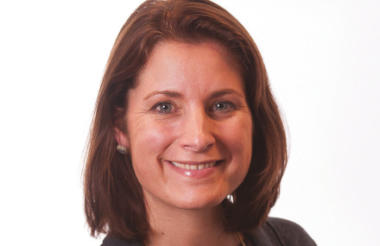Career marketer Rebecca Salt joined her first trustee board, at In Kind Direct, a year ago. She explores the differences between the charity environment and her more familiar corporate world.
I have just passed my first anniversary as a charity trustee and it gave me pause to reflect on the differences I have encountered between the corporate world I am used to and being part of a charity. There are three main ones: speed, control and the importance of good governance.
I am used to working quickly, delivering to deadlines and working closely with colleagues to drive forward projects linked to specific business goals and drivers for growth. One of the areas of difference I note is that due to fewer resources within a charity (for all the right reasons – let’s focus our spend where we can do the most good and not on administration) projects can take much more time to move through their lifecycle to completion.
This can be frustrating as a trustee, as you only see snapshots of activity at board meetings and are not actively involved with the daily issues and the many challenges of projects. This more hands-off approach requires me to adjust my usual corporate mindset and look through the charitable lens to ensure perspective is retained.
Secondly, as someone used to leading people and running teams, one of the biggest adjustments I have had to make – especially as a member of the marketing committee – is not to jump in and take over a project. I am passionate about brand and reputation but have learned that I play a different role as a trustee.
I am not there to roll my sleeves up and drive forward my ideas and ways of working. I am there to support the charity’s great marketing team who lead and fundamentally own the activity by providing guidance, ideas, practical solutions and support – when it is asked for!
On occasion, for example in planning for In Kind Direct’s 20th anniversary celebrations next year, I would love to have some of my corporate resources more readily to hand to point at the project to help ease things along. But I also appreciate that not having these resources available makes me more creative and flexible in my thinking which, transversely, helps me think differently about how I do things with my day job.
The final, and probably most important, element of the trustee role is the governance of the charity and how we work with our board colleagues to ensure that the charity is well run. We are very lucky within In Kind Direct to have a robust and sound board structure.
Our chief executive, Robin Boles, has been at the helm of the charity since its inception 20 years ago and she has a remarkable memory for the smallest detail to help educate us all. She and John Pattullo, our chair, have a strong working relationship which helps to inform effective board meetings and ensures smooth and to-time board meetings.
This is probably closest to the non-executive/executive corporate board relationships of all the elements I flag, but is also less formal and more collaborative than my corporate experiences have been at times.
Our role as trustees is of course to both provide strategic direction and hold our executive leaders to account, but not by primarily seeking to find fault or to apportion blame, nor to provide ongoing management as I would in the corporate model.
Above all, we also need to build strong relationships with the charities in our network to thank, recognise, guide and provide support. As trustees we need to provide a sounding board and to be cheerleaders for their extraordinary efforts in a very difficult environment.
Rebecca Salt is a trustee at In Kind Direct.








